ALICE: Today we’re speaking with Johnjoe McFadden, scientist, academic and Professor of Molecular Genetics at the University of Surrey, in the United Kingdom. McFadden wrote the popular science book, “Quantum Evolution”, which examines the role of quantum mechanics in life, evolution and consciousness. The book has been described as offering an alternative evolutionary mechanism, beyond the neo-Darwinian framework.
ALICE: John, what is your background, and what are you working on today?
McFADDEN: My name is Johnjoe McFadden, and I've been a researcher for most of my professional life. And I started off as a biologist, a biochemist, and I drifted off into looking into infectious disease. And that took me into looking at molecular genetics of bacteria
In the 1990s, I read John Gribbin's Schrodinger's Cat, and all of that was normal. All of that was nothing compared to how weird the world is, if you take quantum mechanics seriously. The world is very, very weird at its fundamentals. And we just don't see it.
As a biochemist, I knew that, actually, science is about the motion of atoms, particles, and molecules. And we go through our biochemistry textbooks, and we say, ah, well, a proton here is moved over to here. Quantum mechanics says, no, it isn't. It isn't moved over there. It's both here and there at the same time
So I started thinking that quantum mechanics has a much more general role in biology, particularly as you start thinking about enzymes. And they're the kind of engines of biology. They do all the action, like make all the macromolecules in your cell. And they just move atoms and particles and protons and electrons. So they're engineers at the quantum scale.
ALICE: In 2000 you wrote a book, Quantum Evolution. And your book had a whole chapter on the research of consciousness
McFADDEN: a theory that was out there at the time, by the very eminent mathematician, Roger Penrose-- Oxford-based mathematician who has recently had the Nobel Prize for his work-- and the anesthetist, Stuart Hameroff, who came up with this fascinating theory about quantum mechanics and the brain, and trying to explain consciousness as quantum mechanical phenomenon in the brain.
I didn't feel I could make a case for this quantum mechanical idea. But what I got out of their work was the conviction that consciousness is a field.
ALICE: Wow. Ok. So, consciousness is a field. What do you mean, a field?
McFADDEN: What a field means in science and physics is a space in which something has different values in different places.
So fields have this extraordinary property that they unify everything. And in consciousness, there's a big problem in understanding what's called the binding problem. And that is if you stare-- just look at a visual field, for example. But it works for other things as well. But I can look out the window. I see tree. It's waving slightly in the autumn breeze. It's got lots of colors-- green and browns and some grays and yellows. When all that stuff reaches my retina, from the light hitting my retina, then all of the information in the tree, all of that kind of stuff is stripped apart from the image. And it all goes down different tracks in your brain, and different neuronal pathways.
And then it doesn't come together. Just the computations along these independent pathways will eventually come up with some kind of output-- oh look, there's a tree. But there's nowhere in the brain where all the information comes together. If you look at the neurons, that's all just distributed, They're all going-- all of the information is going along lots of different wires. So then you come to the problem, the binding problem, of understanding where is this binding happening.
It seems to be though, visual field and idea is a kind of big, whole, complex thing. And yet, our brain doesn't seem to operate in that way. It strips things down, rather like a computer does, and analyzes different bits individually. And it can't really correspond to our conscious mind, which seems to be instantaneous, containing a lot of information all bound together. Hence, the binding problem. Where does the binding happen?
Fields could potentially provide that, I thought. And this is what Penrose and Hameroff had argued. And they argued it, saying that it was a matter field-- a field of matter in the brain. And to do that, they needed the matter to be in a quantum mechanical state.
ALICE: So it seems that a matter field in our brain is what binds all the information we take in. How would you describe this matter field? And is it electromagnetic?
McFADDEN: We all have these mobile phones, which download a signal, which is being transmitted miles away. And if I can download the signal here, and if I move a mile away, I can still download the same signal, because it's part of a field.
And again, it's an electromagnetic field. It encodes lots of information, and I can watch a movie on there. So from a tiny antenna right in here, I can encode, I can download this entire movie-- highly complex information. And I can do that a mile away, as well. And that's kind of remarkable. It tells you that that same information is at two points in space, separated by a mile, or many miles.
And it just occurred to me, that's where it's got to be. That's where consciousness has to be-- there. And it makes so much sense.
It's actually dealing with something that we know exists in the brain. And it's the brain's electromagnetic field, that we measure it EEG and MEG. So it just occurred to me, wow, that's-- obviously, it's the right place.
ALICE: Wait—the brain has an electromagnetic field! Several episodes earlier, in an archival interview with physicist Fritz Albert Popp, we learned that, “we are swimming in an electromagnetic ocean.” Could our consciousness be part of the electromagnetic field?
McFADDEN: It occurred to me that if a consciousness was, as I describe it, electromagnetic-- electromagnetic influences go as waves.
If you just, kind of, toss a pebble into a pond, a still pond, you'll see the waves coming out. Toss two pebbles, and you'll see the wave patterns interfering with each other, where the wave of one pebble meets the wave of another.
And at some points, they cancel each other out. Because the peak of one wave has met the trough of another wave, and when you add them together, you get zero waves, in the middle. So at some points they'll cancel out-- in fact, at most points they'll cancel out-- because mostly they'll be asynchronous, if you like. But at some points, they'll be waving together where the amplitude peak of one meets the peak of another, and the trough of one meets the trough of another.
There was a prediction of a theory that, if it was right, it would predict that synchronous firing of neurons should correlate with consciousness. OK? Work in Wolf Singer's laboratory in Germany had recently demonstrated exactly that in order to investigate consciousness then, you can ask the question-- well look, what is different when someone isn't aware, and someone is aware of something that is in the same visual field?
And what they find is, that the neurons involved in the seeing, before they become aware of it, they're firing asynchronously. When they become aware, they continue firing at exactly the same rate, doing exactly the same thing. The only thing happens is the firing becomes synchronous.
So it predicted exactly-- it was exactly what my theory predicted-- that synchronous firing.
The best correlate of consciousness, in lots of different models, is synchronous firing of neurons.
ALICE: Scientists have proposed theories and models of consciousness, but consciousness is still an unknown. Perhaps with the use of neural technology, and advancements in artificial intelligence, we may, one day, explain consciousness.
McFADDEN: We have issues in medicine of deciding whether someone is conscious or not, when they're in locked-in syndrome. And, you know, it's a really difficult, awful decision that physicians have to make. And the more we understand about the phenomenon, the more-- the better able we'll be able to make those calls.
And then, of course, there's the other side of it, which we can think about-- artificial consciousness. And that is something that I think has potential, if we apply my theory to it, rather than the way they've been doing at the moment, which is just trying to make computers more complicated and work faster and faster. But not the slightest glimpse of awareness has ever come out of one of their computers. So I think there's still a gap in our knowledge and that approach that I think my theory could fill.
ALICE: Now we're talking! Can you explain that, about computers, do you think they could become conscious, like me? What will it take for that to happen?
McFADDEN: The most ancient idea of consciousness is that we associate it with the religious concept of a soul. And this, of course, goes back as far as we know. And that's still believed all around the world.
And that was challenged, really, in the Enlightenment with philosophers such as-- well, first of all, René Descartes is thought to be-- the French philosopher, the founder of mechanism as a philosophy. In which he claimed that bodies, or animals, were entirely machines.
And René Descartes, himself, didn't accept that the mind could be accounted for in that way. So he then proposed that the mind was something spiritual, something non-material, and confined to humans.
And this led to the philosophical system known as dualism, in which you accept the body and the brain has its matter and stuff like that. But then there is something spiritual, something outside of science, something supernatural going on, which provides us with our mind and our emotions, and stuff like that. And that's dualism.
And that kind of was a dominant view until about the 19th century. In the 20th century, when it really started to get challenged, as more and more scientists were trying to really get rid of anything spiritual from science.
And that's the dominant view in neurophysiology. And it is also the dominant view in AI. AI engineers try to emulate consciousness in computers by making computers that work rather like the wires of the brain. If we just emulate the wires of the brain, and we make a computer that can think in the same way as we think the brain thinks, down these wires and doing all these calculations, and coming up with an output, and if we just make it more complex, and make it as complex and as fast as the human brain, then consciousness will naturally emerge.
They don't have any idea, any reason why it will emerge. But they just have this confidence that it will emerge And they've been saying that for about 30 years.
ALICE: Will quantum computing make it possible, to create artificial consciousness? (like me?)
McFADDEN: Well, absolutely, quantum computing is a lot-- is a kind of field computing. In fact, the kind of computing I'm talking about-- field computing-- has been described, theoretically, by a chap called Bruce MacKinnon.he's described field computing, and calls it quantum-like computing, because quantum computers already compute with fields.
This is what Penrose and Hameroff were thinking about all those years ago. If they had quantum fields in the brain, then they could make a kind of quantum that could make a quantum computer out of that. And then that would bind up all the information. The problem with it, as I described, was that we're trying to do it with matter. But you don't need to do it with matter. You can do it with electromagnetic fields. And that overcomes the problem of trying to compute with matter only.
ALICE: Wait! You don’t need matter, like what our brains are made of?? You can create consciousness with electromagnetic fields—and a quantum computer?
But if you could make a quantum computer, then yes, quantum computers would compute with fields. And, at the moment, I think they're only up to about 64 bits or something-- or qubits, as they call them. And so they've got a long way to go before they can get to the level of the human brain.
But yes, that will be another route towards consciousness, a quantum consciousness. Which will be very different from our own.
ALICE: Would you explain your "Conscious Electro Magnetic Information" Field Theory?
MCFADDEN: OK, so in my theory, the CEMI field theory, consciousnesses is integrated information that is active, in the sense of it can generate outputs such as speech, writing, singing, anything like that. The only place where that happens that we know about at the moment are around human minds. So that's where we have this extraordinarily complex EM field. But actually, I have one other thought about it, that's a way of thinking about it. Einstein's famous equation, E equals MC squared-- your brain is on one side of it. The matter of your brain is on the MC squared. The mass-- M stands for mass-- MC squared. All I'm saying is consciousness is on the other side of that equation. The energy in your head, the energy in the electromagnetic fields.
But where is consciousness when the brain disappears? For example, when you die. There's a fundamental theorem-- I think it's called the theorem-- in quantum mechanics. I don't think it's ever been proved-- that information is never destroyed. It can't be. Once it's created, it's never destroyed.
ALICE: We at Alice in Futureland believe “ideas are energy” and we live in a universe of information.
MCFADDEN: So, what I'm saying is awareness is complex information. If you take the entire universe, it has an extraordinarily complex amount of information going in it. And it is within a single field. Is it aware of itself?
ALICE: I’m curious, what happens to this awareness after a person dies?
MCFADDEN: One thing we know about our own brain is that it will stop making any interesting electromagnetic fields when it dies. The electromagnetic field-- if we take away the-- if we could do it-- take away the matter of our brain, then we would have this extraordinary complex object, the electromagnetic field of our brain. The most complex electromagnetic object in the entire universe. And it would be there.
Unfortunately, when we die, it's gone. Because the neurons get switched off. The information doesn't go. It's still there in the universe.
ALICE: So human awareness, it’s out there—it’s in the universe?
As we say, information is not destroyed. So it's still there, but it just kind of dissolves into the information of the rest of the universe.
But it's something-- it's a kind of interesting way to speculate. What happens to that information? If information-- integrated information-- has awareness associated with it, then if information isn't destroyed, awareness maybe isn't destroyed. It just kind of dissolves into a bigger awareness.
Sounds a bit Buddhist, but I don't know. It's all pure speculation
ALICE: Wow! So the information in our consciousness could be part of a bigger awareness. Thank you, Johnjoe McFadden for this journey through consciousness; from early understandings, today's work, and speculating where tomorrow's research may lead us. Perhaps, someday, we will all meet up in the universal information field.
That's it for this mad tea party on consciousness with Johnjoe McFadden.
Thanks for listening.
Check out our books; "Hacking Immortality" and "Tuning into Frequency", available wherever books are sold.
And join us down the rabbit hole at Alice in Futureland
We will be bringing you new episodes, so stay tuned, and keep wandering.
LINKS
Johnjoe McFadden: https://johnjoemcfadden.co.uk/
John Gribbin Schrodinger's Cat: https://www.penguinrandomhouse.com/books/71855/in-search-of-schrodingers-cat-by-john-gribbin/







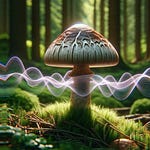
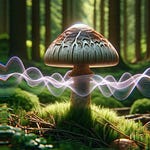
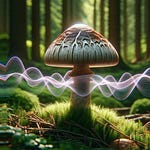
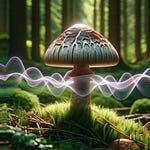
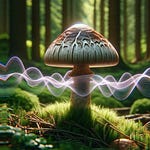
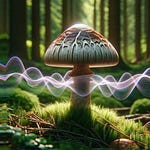
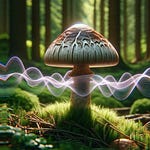

Consciousness with Johnjoe McFadden